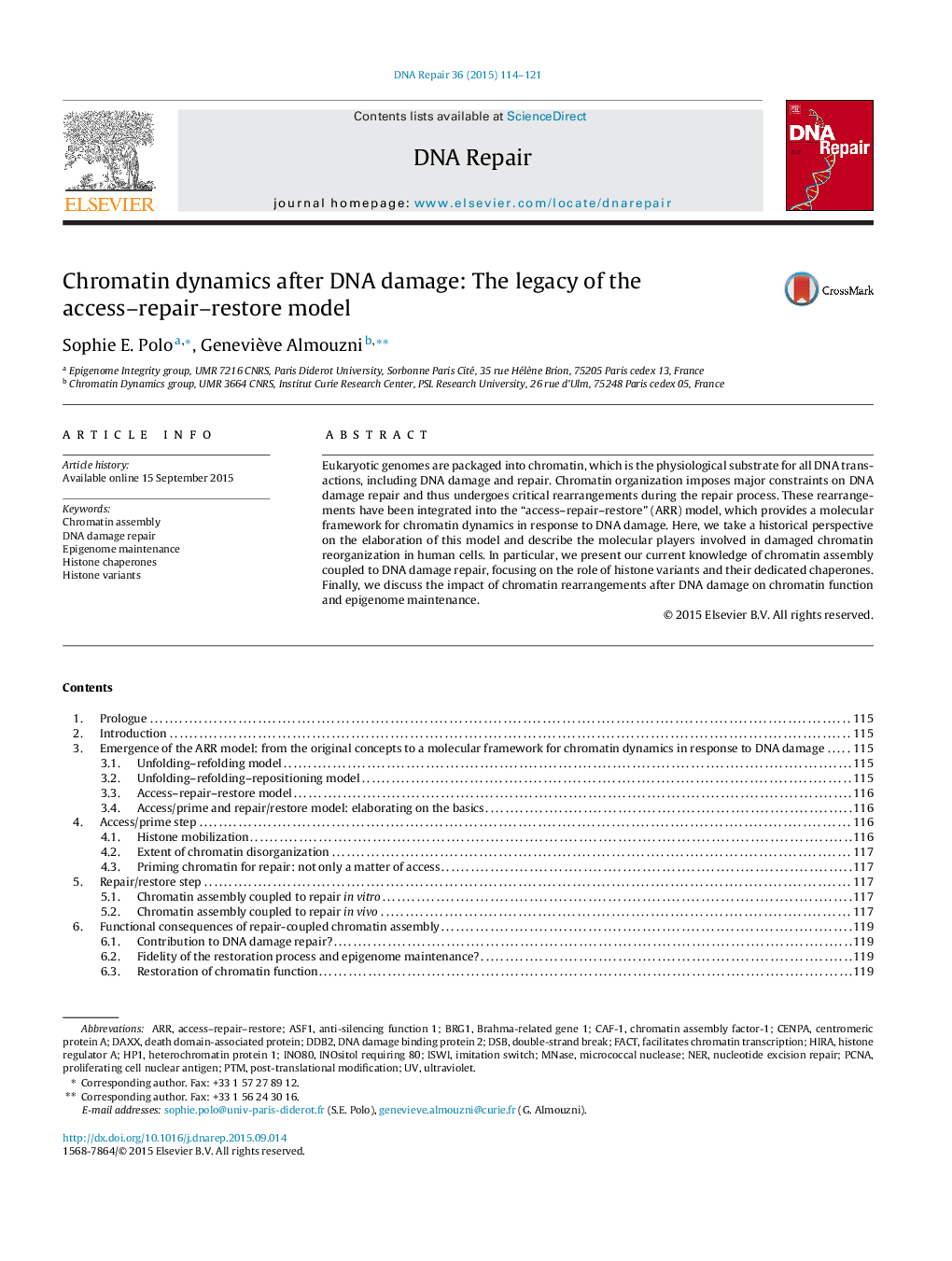| کد مقاله | کد نشریه | سال انتشار | مقاله انگلیسی | نسخه تمام متن |
|---|---|---|---|---|
| 1980053 | 1539392 | 2015 | 8 صفحه PDF | دانلود رایگان |

• The ARR model integrates chromatin dynamics into the DNA damage response.
• DNA damage-induced chromatin rearrangements prime chromatin for repair.
• Repair-coupled chromatin assembly helps restoring chromatin structure and function.
• New histone deposition coupled to repair challenges epigenome maintenance.
Eukaryotic genomes are packaged into chromatin, which is the physiological substrate for all DNA transactions, including DNA damage and repair. Chromatin organization imposes major constraints on DNA damage repair and thus undergoes critical rearrangements during the repair process. These rearrangements have been integrated into the “access–repair–restore” (ARR) model, which provides a molecular framework for chromatin dynamics in response to DNA damage. Here, we take a historical perspective on the elaboration of this model and describe the molecular players involved in damaged chromatin reorganization in human cells. In particular, we present our current knowledge of chromatin assembly coupled to DNA damage repair, focusing on the role of histone variants and their dedicated chaperones. Finally, we discuss the impact of chromatin rearrangements after DNA damage on chromatin function and epigenome maintenance.
Journal: DNA Repair - Volume 36, December 2015, Pages 114–121